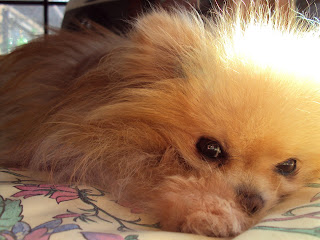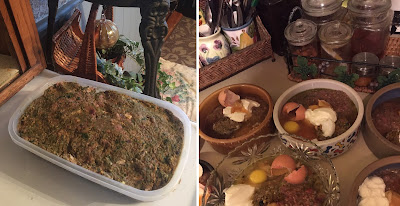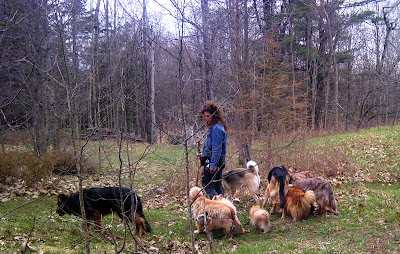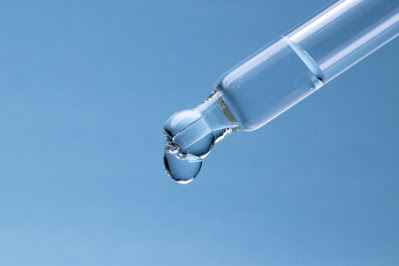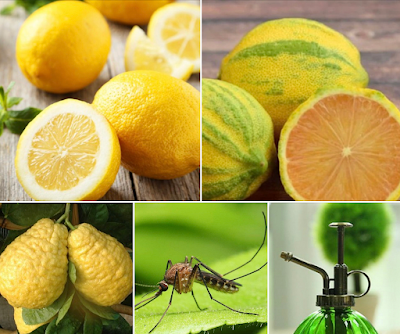Creating a Respectful Bond via Touch and Play, at the Right Time in the Right Way - You, Your Child, Your Puppy, Your Dog
In this article:
- Mindfulness, Understanding, Support
- Understand Your Puppy's Personal Disposition
- Teach Puppy To Normalize Being Touched
- Support Your Puppy's Natural Routine
- How to Create a Healthy, Mutually Respectful Relationship
- When Its Appropriate To Touch Puppy, and When Its Not
- How To Touch Puppy
- Puppies Have A Natural Need to Chew
- Teach Bite Inhibition
When
a family engages me - within in the first few weeks of acquiring a puppy, I can make sure that the relationship between puppy and child
starts out the right way – thus ensuring that problem situations and behaviours
do not develop.
In
other cases, I get called in after the puppy has been in the family for months,
the puppy and child not having been taught at the outset how to respect each
other are now in crisis mode. The puppy has taken over, is jumping, biting,
hyper and out-of-control. What happened?
Well…the dog's people did not fully realize their important role as coach and mentor to the puppy and they also did not understand how to effectively communicate with the puppy.
So What Are Some of the Key Issues To Be Aware Of?
Well…the dog's people did not fully realize their important role as coach and mentor to the puppy and they also did not understand how to effectively communicate with the puppy.
So What Are Some of the Key Issues To Be Aware Of?
1.0 Mindfulness, Understanding, Support
1.1 Understand Your Puppy's Personal Disposition
It is also important to understand that just each human is an individual with their own unique combination of inherited dispositions - consisting of desirable and undesirable tendencies - so it is for the individual puppy.
Some puppies are, by natural disposition:
- Calmer, more complacent, less vocal, less pushy;
- While others, for example are more:
- Curious,
- Persistent,
- Wilful,
- Determined, etc.
- Each of these traits - when enabled the right way, can contribute to the formation of a well-adjusted dog, or when enabled the wrong way will led to big behaviour problems.
- More confident and naturally well balanced;
- While others may have a tendency towards insecurity - which can, if enabled develop into anxiety, obsessive or aggressive reactive behaviour
1.2 Teach Puppy To Normalize Being Touched
- Being touched from head to tail, including;
- Having its fur and nails groomed, its teeth and ears examined and cleaned;
- Being picked-up;
- Being turned on its side;
- Not biting if its tail or ears are pulled…
It
is equally important to teach the child that he/she must respect the puppy and
not constantly invade its space, constantly touch, roughly touch, and insistently
rev-up the puppy to play.
1.3 Support Your Puppy's Natural Routine
Dogs are hard-wired to adapt to a routine of work, eat and rest. It is natural for a puppy to want to eat, play and then go off to a quite place to rest. This is a dog’s ‘normal’. If you think about it, the sequence of work-eat-rest is also a normal and familiar sequence to human behaviour.
When
a child is permitted to constantly pester a puppy, the puppy learns an altered
state of normal. The puppy is inadvertently taught by the child that being
excited all of the time is normal. Couple this with failure to teach structured
play to the puppy (yes, puppies as young as 8 weeks old can be taught) and the
end result is a ‘hyper’ puppy with little to no social manners.
By
that time the puppy has learned:
- To associate humans with high levels of excitement;
- To go over-threshold…no rules, no limits and;
- To never go into a relaxed and calm state.
At
this point the puppy’s people are upset with the puppy as it jumps on people,
bites without restraint, gets into everything, chews-up shoes, steals gloves,
grabs food, runs around like a maniac despite the fact that it may have had
sufficient physical exercise.
Who
set the puppy up for failure? The humans
inadvertently did.
2.0 How to Create a Healthy, Mutually Respectful Relationship
2.1 When Its Appropriate To Touch Puppy, and When Its Not
Invasion
of personal space and lack of consideration in when and how we touch another
being (human or canine) is a two-way street. If we desire respect and
consideration we must also give respect and consideration.
Dogs
are not robots, nor should they be considered slaves to the wants and desires
of mankind. Dogs are intelligent
sensitive beings, and like humans – when provided with the opportunity to learn
from well-adjusted older members of our respective species - become well
adjusted, considerate social beings.
I find the most effective method to help my clients
grasp the situation is to show them in real-time relative terms…
You
would not like it if your sister, or brother, your friends or child were
constantly touching you, getting into your personal space, and they in turn
would not appreciate it if you did not respect their space and body. There are
times when you require that your personal space be respected. This is a basic and foundational lesson for a
child. In the absence of this learning experience the child can end-up
seriously lacking in social grace. This lesson is very important in the journey
to becoming a well-balanced, social being.
The
same lesson is taught to puppies by adult dogs. The lesson is universal – for
humans and canines alike.
To teach a child to understand what it feels like for a puppy to
have their space constantly invaded, I lean into the child’s personal space and
ask them if they feel comfortable. Invariably the answer is ‘NO!’
Then with a little smile on my face and the child, sits with a
matching smile on their face - I say to the child ‘and now you know how your
puppy feels when you disrespect its personal space’.
And
for the parents, I always ask, ‘what happens, if you over-stimulate your child –
let them get too excited and at the same time allow them to skip their rest
time’. The child becomes hyper, agitated and exhausted all at the same time.
And so it is for a puppy. If you were to continue to allow the child, on a
daily basis to spend the bulk of their time in an over-excited state and be
depleted of rest the child would be in a constant altered state of normal.
Flooded, anxious, and eventually lose the ability to calm down. And so it is
for a puppy.
So,
should your child constantly pester, touch and invade your dog’s personal space
and senses…the answer is NO.
And
what is it that humans love so much about dogs? It is the fact that dogs love
selflessly.
A
puppy can provide the perfect opportunity to teach a child selfless love. To
honor the dog, to honor mutual respect, self awareness, self discipline and a
reasonable quota of independence, to enable calm and trust, to respect the dog
we must also learn to love selflessly.
Both children and adults should share affection with their puppy
when the circumstances are mutually beneficial (for dog and human) as discussed
in this
article.
Your child SHOULD NOT constantly flood your puppy with voice or
get in the puppy’s space and pester him/her. Your child SHOULD learn to share
mutual warmth and affection in the right way and at the right time.
2.2 How to Touch Puppy
Again let me show you in a way that will be easy for you to relate
to. Did you like it when your parents or grandparents ruffled you hair? With
one of your hands reach up to your head, place your hand flat against the top
of your head and move your hand back and forth quickly on top of your head, Did
that feel pleasant? Did it make you feel relaxed? Or was that touch annoying
and agitating?
Now instead reach your hand-up to the back of your neck and with a
firm pressure behind your finger tips give you neck a slow massage.
Now consider the two types of touch - one touch was annoying and
agitating, the other touch was calming and peaceful. If you don’t want a hyper puppy who associates
humans with high states of excitement and agitation then when you touch your
puppy enable calm with your touch – not agitation. This is what I teach my
clients and their children. I lean over and quickly ruffle a child’s hair, I
then ask was that annoying? Children get the concept very quickly. Then it
becomes the parent’s job to remind, coach and mentor.
2.3 How To Play With Puppy
Your child should learn how to work with puppy at play-time. Teach
the puppy to sit, calm, make eye contact and then the child can throw a toy for
the puppy to retrieve. By taking this
approach to play time:
The Puppy:
- Has a much needed opportunity to work physically and psychologically.
- Just like humans, dogs need to exercise both their body and their mind in balance.
- The puppy learns that it must connect with its human, ask permission, wait for direction and then take action…this builds a puppy’s confidence the right way.
The Child:
- Also gets to work physically and psychologically;
- Has his/her first opportunity to learn pack leadership;
- The child gains quit, respectful confidence;
Child and Puppy have an opportunity to bond in a mutually
beneficial way.
2.4 Puppies Have a Natural Need to Chew
Satisfy That Need the Right Way
Read more about chewing here.
2.5 Teach Bite Inhibition
Bite inhibition is a behaviour that should be taught and re-inforced (the right way). . I work with a lot of people who did not understand how to teach their dog this important lesson. Not the dogs fault. Sometimes people just don't realize how important it is to impart this lesson when their dog is a cute little puppy. In other cases the people may have tried to address the issue but due to the techniques used may have been unable to translate the need to stop into a lesson that their puppy could understand. Once again:
Bite inhibition is a behaviour that should be taught and re-inforced (the right way). . I work with a lot of people who did not understand how to teach their dog this important lesson. Not the dogs fault. Sometimes people just don't realize how important it is to impart this lesson when their dog is a cute little puppy. In other cases the people may have tried to address the issue but due to the techniques used may have been unable to translate the need to stop into a lesson that their puppy could understand. Once again:
- Offering treats to a puppy or dog that is nipping and biting will not teach bite inhibition;
- Using unrestrained physical force and dominating your dog:
- May teach a 'type' of bite inhibition but in so doing you may end up:
- Creating fear in your dog, and;
- May make your dog aggressive;
- Or insecure submissive;
- In either case - as far as I am concerned both of these methods and outcomes are very damaging to the dog. As many of my clients can attest - having used those methods before they worked with me.
- The end result that you should instead seek to create is a happy, confident and respectful dog.
- Facial Expression;
- Body Language;
- How the smaller and larger parts of your body are positioned;
- Held in context to your body, and;
In context to the space that you occupy while still and while in-motion; - Breathing;
- Scent; and yes, sorry folks;
- Extra sensory perception.
It is also important to understand that if a puppy is behaving in a very physical manner - jumping on you, biting your clothes, your hair etc. and you become equally physical in your response you will only make your puppy's behaviour more intense...for the reasons stated directly above and in the 'note text' located further below. So if your...
If Puppy Bites A Child
The puppy is not bad, it simply needs to be taught the right way from the get-go not to bite. And it should be noted that just because a puppy breaks skin does not mean that the puppy intended to do harm...sometimes a nail gets caught or a tooth and accidentally opens up a small wound. If you have not learned how to be an effective communicator you will turn an innocent situation into one that promotes unwanted excitement, fear and aggression. To understand more read:
Holistic Diet, Nutrition, Wellness Services Tailored to Your Individual Dog and Cat
For information about my holistic diet, nutrition and wellness services, visit my holistic wellness services page.
Maintain good health | Address acute and chronic health issues | Pre and post surgery support and recovery
My holistic wellness services are available worldwide via video consultation.
🌎 USA | Canada | UK | Europe | Australia | New Zealand | Asia | South and Central America | Africa | UAE
📱FaceTime | Facebook | Skype | WhatsApp
To set-up your holistic wellness consultation get in-touch via email, go to my contact me page.
Holistic Behavioral Services for Your Dog
For information about my holistic behavioral services, visit my holistic behavioral services page.
For dogs of all ages, sizes and breeds.
My behavioral services are available worldwide via video consultation.
🌎 USA | Canada | UK | Europe | Australia | New Zealand | Asia | South and Central America | Africa | UAE
📱FaceTime | Facebook | Skype | WhatsApp
To set-up your holistic behavioral session get in-touch via email, go to my contact me page.
Affiliations to Companies
✓ None.
✓ I don't sell food, supplements, or other products.
✓ I'm not aligned with any companies.
Article and graphics by Karen Rosenfeld.


